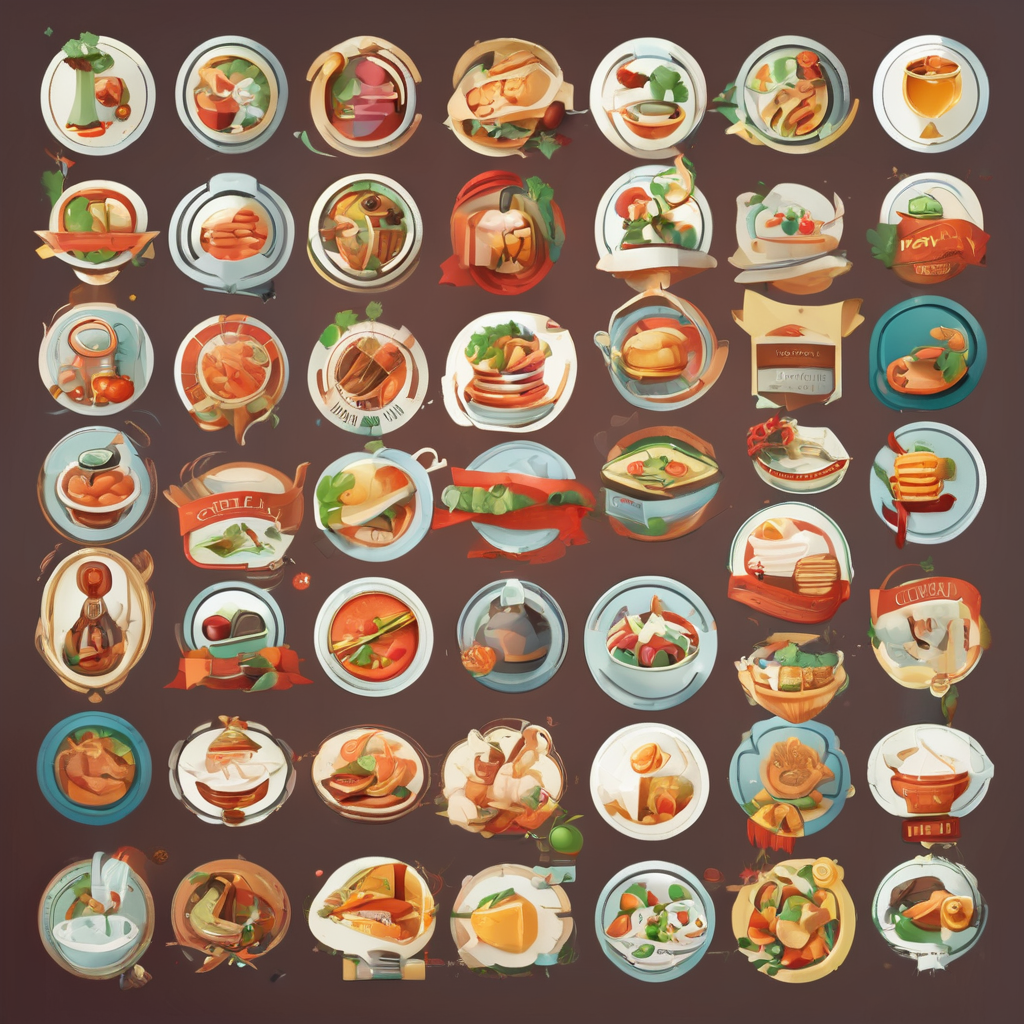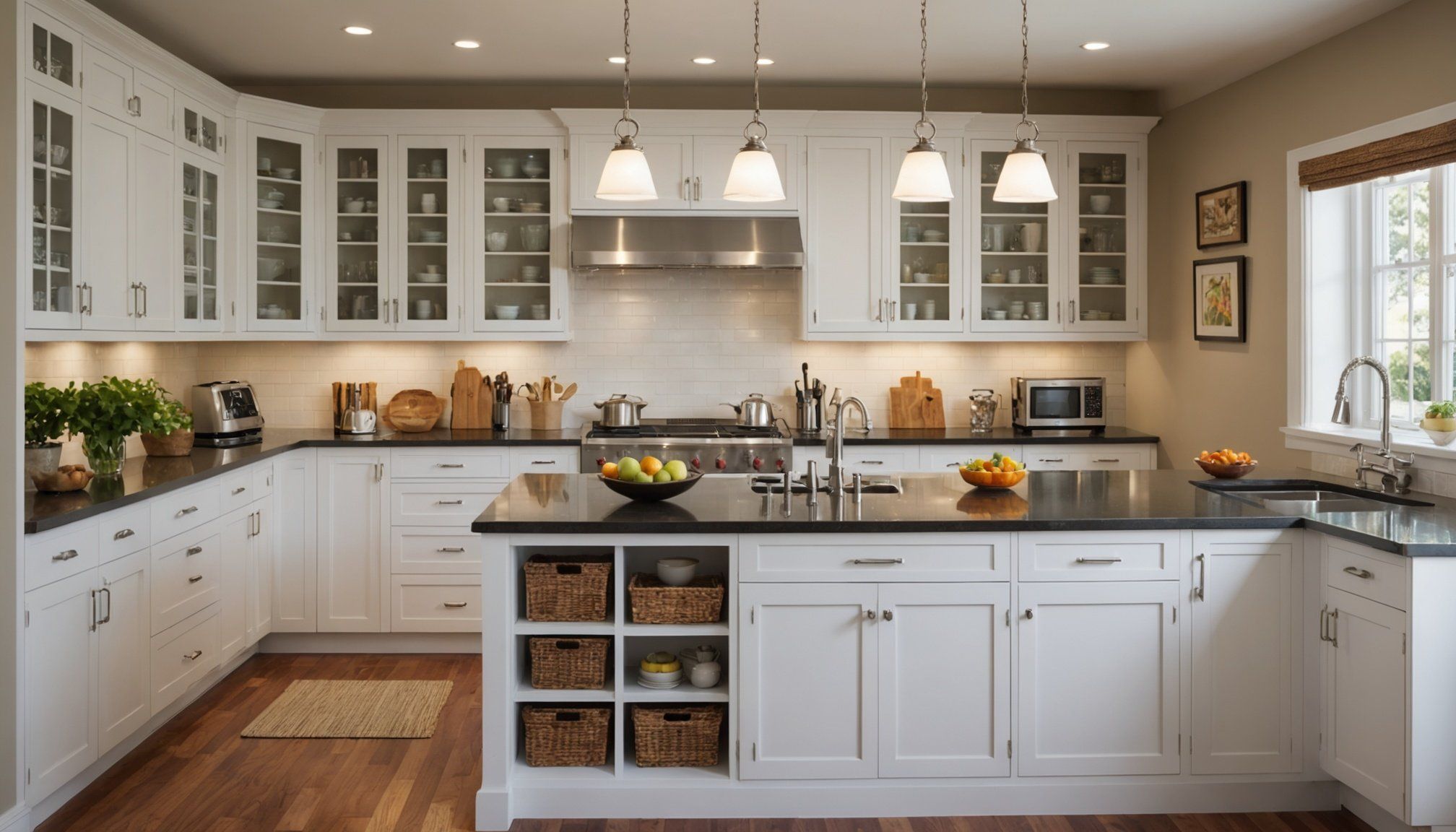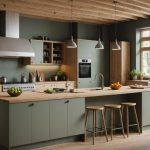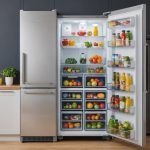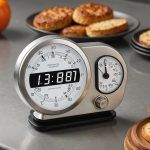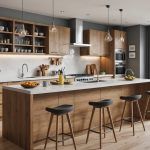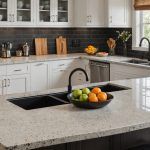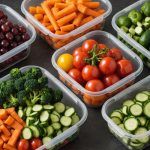Transforming Your Kitchen: Creative Strategies for an Allergen-Free and Healthier Home
Creating an Allergen-Free Environment
When it comes to transforming your kitchen into an allergen-free and healthier space, the first step is to understand the importance of creating a safe environment for everyone, especially those with food allergies. According to the Food Allergy Awareness Organization, “approximately 30,000 emergency department visits occur annually due to food allergic reactions,” highlighting the critical need for vigilant allergen management[1].
Essential Pantry Items and Storage
To start, you need to stock your pantry with allergen-free staples. Here are some essential items to consider:
This might interest you : Seamless culinary harmony: innovative strategies to blend your indoor and outdoor cooking areas
- Grains: Quinoa, rice, and gluten-free oats are versatile bases for meals.
- Flours: Alternative flours like coconut, almond (if nut allergies aren’t an issue), or gluten-free flour blends are must-haves for baking.
- Dairy Alternatives: Keep dairy-free options like almond milk, oat milk, or coconut milk on hand to replace traditional dairy in recipes[2].
Separate Storage:
- Store allergy-safe ingredients separately from other pantry items.
- Use clearly labeled containers to make them easy to identify.
- Consider using color-coded containers for quick recognition, especially if multiple family members have different allergies[2].
Preventing Cross-Contamination
Cross-contamination is a significant risk in any kitchen, and it requires meticulous attention to detail to prevent. Here are some strategies to help you avoid cross-contamination:
In the same genre : Creating an inclusive multi-sensory culinary journey for the visually impaired
Dedicated Utensils and Cutting Boards
- Use separate utensils, cutting boards, and cookware for allergy-friendly meals.
- Color-coded cutting boards can help prevent cross-contamination by designating different boards for specific foods like proteins, vegetables, and allergenic ingredients such as nuts or dairy[3].
Cleaning and Sanitization
- Maintain designated areas in the kitchen for allergy-safe food prep, with tools stored separately to reduce the risk of contamination.
- Use wet cloths saturated with food-grade sanitizing solution for superior allergen removal efficacy. FDA guidelines recommend thorough hot water and detergent washing followed by sanitizer application[1].
Time-Saving Meal Prep Ideas
Managing food allergies doesn’t have to be time-consuming. Here are some time-saving meal prep ideas to keep your kitchen efficient and safe:
Batch Cooking
- Prepare larger portions of allergy-safe meals like soups, casseroles, or pasta dishes.
- Store them in individual containers, so all you have to do is reheat them throughout the week[2].
Freezing Meals
- Cook allergy-friendly meals in bulk and freeze them in portion-sized containers. Meals like chili, stews, and baked goods can be frozen and reheated when needed[2].
Using Shortcuts
- Make use of pre-chopped vegetables, frozen allergy-safe meals, or store-bought sauces to speed up prep time.
- Having allergy-safe sauces on hand can instantly transform simple ingredients into flavorful meals[2].
Essential Tools for an Allergen-Free Kitchen
The right tools can make a significant difference in maintaining an allergen-free kitchen. Here are some must-have gadgets and tools:
Color-Coded Cutting Boards
- Dedicated cutting boards are fundamental for maintaining allergen safety. Color-coded options help prevent cross-contamination by designating different boards for specific foods[3].
Air Fryer
- An air fryer is among the best kitchen gadgets for preparing healthy snacks. Achieve crispy textures with minimal oil—a perfect way to create allergen-friendly versions of crowd favorites like roasted nuts or vegetable fries[3].
Food Processor
- With its ability to chop, puree, and shred, a food processor reduces prep time, particularly for large meals. From smooth dips and pastes to finely chopped vegetables, this gadget is an indispensable ally for allergy-conscious cooks[3].
Healthy and Allergy-Friendly Recipes
Cooking allergy-friendly meals doesn’t mean sacrificing flavor or variety. Here are some tips and recipes to keep your meals exciting and safe:
Kid-Approved Allergy-Safe Recipes
- DIY Rice Cake Pizzas: Top gluten-free rice cakes with dairy-free cheese, tomato sauce, and your child’s favorite toppings, like pepperoni or veggies. Pop them in the oven for 5–10 minutes for a crunchy, cheesy pizza alternative[2].
- Sweet Potato Fries: Cut sweet potatoes into thin strips, toss them with olive oil and salt, and bake until crispy. Pair with an allergy-safe dipping sauce for a tasty, healthy snack[2].
Digital Tools and Menu Platforms
In today’s digital age, technology can significantly enhance your ability to manage food allergies in the kitchen.
Digital Menu Platforms
- Revolutionary digital menu platforms redefine allergen information accessibility. Real-time ingredient tracking capabilities ensure precise allergen documentation, while automated update protocols maintain menu accuracy[1].
Consumer-Facing Mobile Technologies
- Consumer-facing mobile technologies emerge as critical safety tools for food-allergic guests. Peer-review functionality provides crucial insights into restaurant allergen accommodation practices. Advanced filtering algorithms enable precise allergen-specific restaurant discovery, revolutionizing dietary restriction management[1].
Cleaning and Maintenance for an Allergen-Free Home
Maintaining a clean and allergen-free home extends beyond the kitchen. Here are some tips for your overall home cleaning routine:
Eco-Friendly Cleaning Products
- Use non-toxic, eco-friendly cleaning products to ensure your home remains free from harmful chemicals.
- Opt for cleaning solutions that are free from common allergens and irritants[4].
Air Quality and Ventilation
- Ensure good air quality by maintaining proper ventilation in your home. This is especially important in the kitchen where cooking can release particles and fumes[4].
Practical Insights and Actionable Advice
Transforming your kitchen into an allergen-free and healthier space requires a combination of the right tools, strategies, and mindset. Here are some practical insights and actionable advice to help you along the way:
Labeling and Communication
- “Data-driven research emphasizes communication protocols as the vital bridge between guest safety and kitchen execution,” notes an expert in food allergy management. Ensure all allergy-safe ingredients are clearly labeled and consider using color-coded stickers to identify each member’s safe foods[1].
Regular Cleaning Routine
- Establish a regular cleaning routine that includes thorough sanitization of all kitchen surfaces. This is crucial for preventing cross-contamination and maintaining a safe cooking environment.
Family Involvement
- Involve your family in the process of maintaining an allergen-free kitchen. Educate everyone on the importance of separate storage, dedicated utensils, and thorough cleaning to ensure a collaborative effort in keeping the kitchen safe.
Transforming your kitchen into an allergen-free and healthier home is a journey that requires commitment, the right tools, and a well-thought-out strategy. By implementing these creative strategies, you can create a safe and enjoyable cooking environment for everyone in your family.
Key Takeaways
- Allergen-Free Pantry: Stock your pantry with essential allergen-free staples.
- Cross-Contamination Prevention: Use dedicated utensils, cutting boards, and thorough sanitization protocols.
- Time-Saving Meal Prep: Batch cook, freeze meals, and use shortcuts to streamline your cooking process.
- Digital Tools: Utilize digital menu platforms and consumer-facing mobile technologies to enhance allergen management.
- Eco-Friendly Cleaning: Use non-toxic, eco-friendly cleaning products and maintain good air quality.
By following these guidelines, you can ensure your kitchen is not only allergen-free but also a healthier and more enjoyable space for your family.
Table: Essential Tools for an Allergen-Free Kitchen
| Tool/Gadget | Benefits |
|---|---|
| Color-Coded Cutting Boards | Prevents cross-contamination, easy to clean, and dishwasher-safe |
| Air Fryer | Prepares healthy snacks with minimal oil, crispy textures |
| Food Processor | Reduces prep time, chops, purees, and shreds ingredients |
| Stand Mixer | Versatile for baking and cooking, hands-free operation |
| Instant Pot or Slow Cooker | Saves time, multi-tasking, perfect for stews, soups, and desserts |
| Non-Stick Tawa | Ideal for flatbreads and pancakes, even cooking surface |
| Blender or Grinder | Efficiently grinds spices, blends soups, and creates smooth batters |
List: Tips for Maintaining an Allergen-Free Home
- Separate Storage: Store allergy-safe ingredients separately from other pantry items.
- Dedicated Utensils: Use separate utensils, cutting boards, and cookware for allergy-friendly meals.
- Labeling: Ensure all allergy-safe ingredients are clearly labeled and consider using color-coded stickers.
- Cleaning Routine: Establish a regular cleaning routine that includes thorough sanitization of all kitchen surfaces.
- Eco-Friendly Cleaning Products: Use non-toxic, eco-friendly cleaning products to ensure your home remains free from harmful chemicals.
- Air Quality: Ensure good air quality by maintaining proper ventilation in your home.
- Family Involvement: Involve your family in the process of maintaining an allergen-free kitchen.
Quotes
- “Professional kitchen safety hinges upon methodical sanitization protocols. Clinical studies demonstrate superior allergen removal efficacy through wet cloths saturated with food-grade sanitizing solution,” emphasizes an expert in kitchen safety[1].
- “Creating an allergy-safe kitchen begins with thoughtful preparation and organization. By keeping essential allergen-free staples and taking steps to prevent cross-contact, you can ensure mealtimes are both safe and stress-free for your family,” advises a parenting expert[2].
By integrating these strategies and tools into your daily routine, you can create a safer, healthier, and more enjoyable home environment for everyone.
